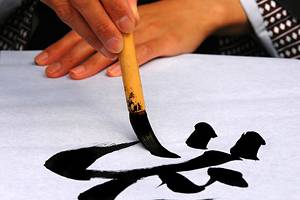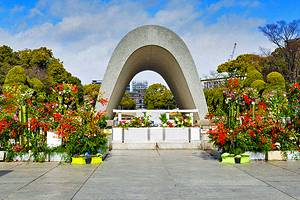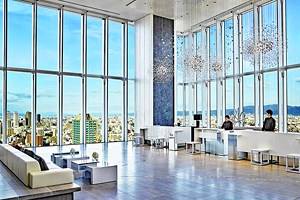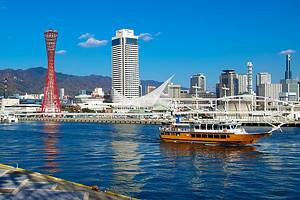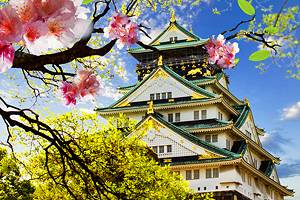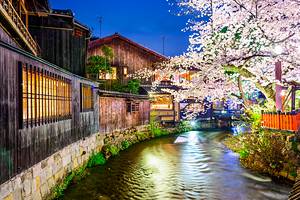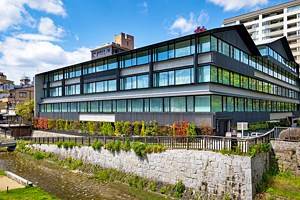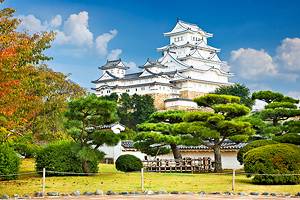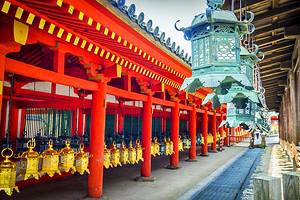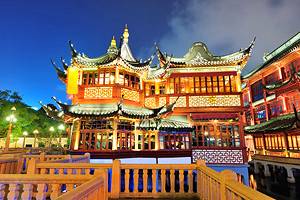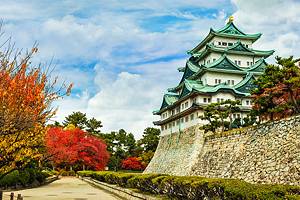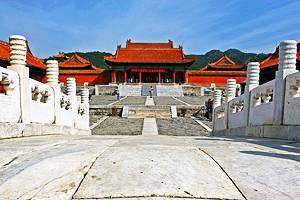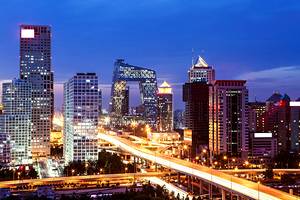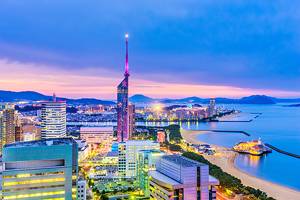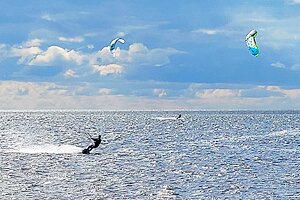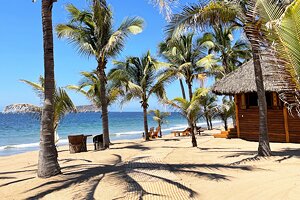16 Top-Rated Tourist Attractions in Seoul
Author Freddy Sherman has visited South Korea multiple times, most recently exploring Seoul and the DMZ in 2022.
Seoul, South Korea is a vibrant and exciting city, one that deftly combines ancient history with ultra-modern design and technology. This city is filled with a wide range of fun things to do and tourist attractions of all types, from outdoor adventures like exploring Mount Namsan and its surrounding park to indoor fun like visiting one of Seoul's many museums.
Seoul is also a city of palaces, with five huge palace complexes located throughout the city and now restored to their former glory. Of course, it's also known for its food, with a mouthwatering array of street food, Korean specialties like barbecue, and even fine-dining options.
Discover the best places to visit in this exciting city with our list of the top attractions and things to do in Seoul.
- 1. N Seoul Tower
- 2. Explore the Bukchon Hanok Traditional Village
- 3. National Museum of Korea
- 4. Lotte World Tower
- 5. Visit the DMZ
- 6. Gyeongbokgung Palace
- 7. Seoul Museum of Art
- 8. Blue House
- 9. Bongeunsa Temple
- 10. Gwanghwamun Gate
- 11. Take a Walk along Cheonggyecheon, Seoul's Urban Stream
- 12. Jingwansa Temple, Bukhansan National Park
- 13. People Watch in Itaewon
- 14. Dongdaemun Design Plaza
- 15. Gwangjang Market
- 16. Spend a Sunday in Insadong
- Where to Stay in Seoul for Sightseeing
- Map of Attractions & Things to Do in Seoul
- Seoul, South Korea - Climate Chart
1. N Seoul Tower
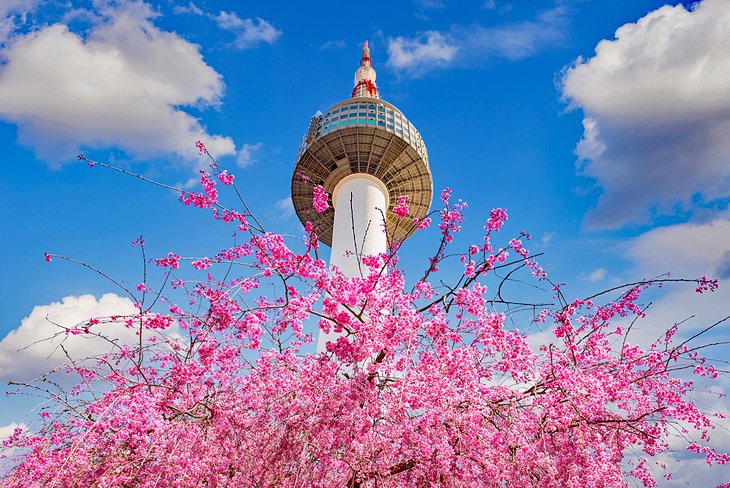
Rising almost 500 meters above the city, this communications and observation tower provides dramatic views of the city from its perch on the side of Mount Namsan. A cable car whisks you up the side of the mountain to the base of the tower. From here, you can go up in the tower and visit any one of four observation decks, one of which is a rotating restaurant.
There are five different dining experiences at the N Seoul Tower and, of course, several gift shops. The n.GRILL, on the top level, is considered one of Seoul's best French fine-dining restaurants. Be sure to visit the new Inside Seoul immersive media art exhibition, where 40 laser projectors create a virtual display of the city via five-dimensional mapping, with the tower at the center.
The views from the tower are great, but so are the views of the tower from most parts of the city. Computer-controlled LED lighting on the exterior of the tower provides a digital, visual cultural experience of Seoul with changing themed lighting presentations.
Address: 105 Namsangongwon-gil, Yongsan 2(i)ga-dong, Yongsan-gu, Seoul
2. Explore the Bukchon Hanok Traditional Village
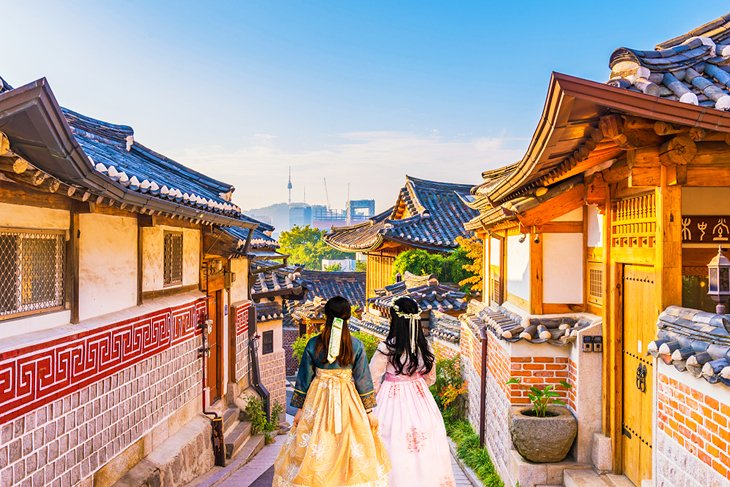
For a taste of Korean traditional culture and architecture, a visit to the Bukchon Hanok Village is a fun and educational way to spend an afternoon. This preserved district of several ancient neighborhoods gives you a feel for what it was like to live in Korea 600 years ago. It's right in central Seoul, in the area between the Gyeongbokgung Palace and the Changdeokgung Palace.
The neighborhoods of narrow streets feature hanoks or traditional Korean houses. It's a unique place, as it's a historic area, very popular with tourists, but it's also a real neighborhood because the houses are all occupied.
Some of the hanoks are now guesthouses and bed-and-breakfasts, and a few are museums and can be toured. Others are cultural centers showcasing traditional crafts and other historic aspects of Korean life, but most are private homes.
3. National Museum of Korea
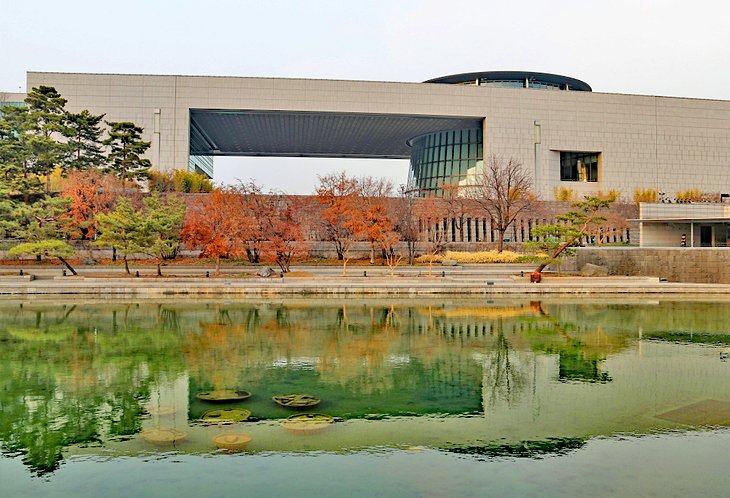
This must-see attraction in Seoul showcases the incredible history and artwork of Korea and the Korean people. The National Museum of Korea, one of the largest in Asia, is in the city's Yongsan District (close to Itaewon).
It focuses on archeology, history, and art and includes a vast collection of works and objects going back more than a million years. There are ancient and prehistoric artifacts, sculptures, paintings, and other artwork along with a large collection of objects and antiques.
Before or after your museum visit, head down the street to Yongsan Family Park, a nice outdoor space to relax. Another important museum worth a visit, The War Memorial of Korea is also close by.
Address: 137 Seobinggo-ro, Seobinggo-dong, Yongsan-gu
4. Lotte World Tower
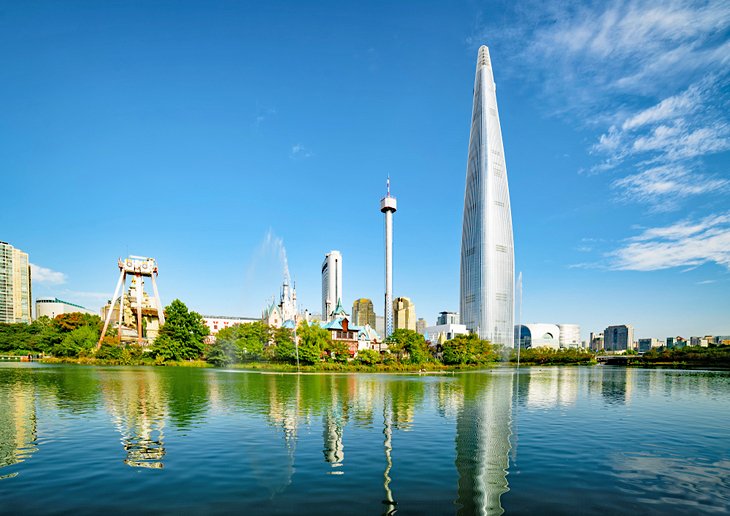
One of the newest attractions in Seoul is the Lotte World Tower skyscraper. The tallest building in South Korea, it's 500 meters above the ground and currently the fifth-tallest building in the world. The vase-like shape, with gentle curves, is designed to mimic traditional Korean ceramic pieces.
There are several indoor and outdoor observation areas (called Seoul Sky) at the top on the 117th-123rd floors. Views are spectacular both during the day and at night, and you can see 360 degrees around the city.
On the 118th floor, there's the Sky Deck with the world's highest glass floor. Like magic, the floor changes from opaque to clear, terrifying unsuspecting visitors. Even getting to the top is fun, and the journey is done via super fast, double-decker elevators, with windows on one side and LED screens on the other three and on the ceiling.
Inside the tower are offices, luxury residences, and the SIGNIEL SEOUL luxury hotel. There's also the Lotte World Aquarium, the Lotte Museum of Art, and an enormous shopping mall. The tower is home to the Lotte Concert Hall and the Lotte Cinema, a state-of-the-art, 21-screen MoviePlex with the world's largest movie screen. The tower is adjacent to the Lotte World amusement park, which is a great thing to do in Seoul for families.
Address: Songpa-gu, Jamsil 6(yuk)-dong, Olympic-ro, 300, Seoul
5. Visit the DMZ
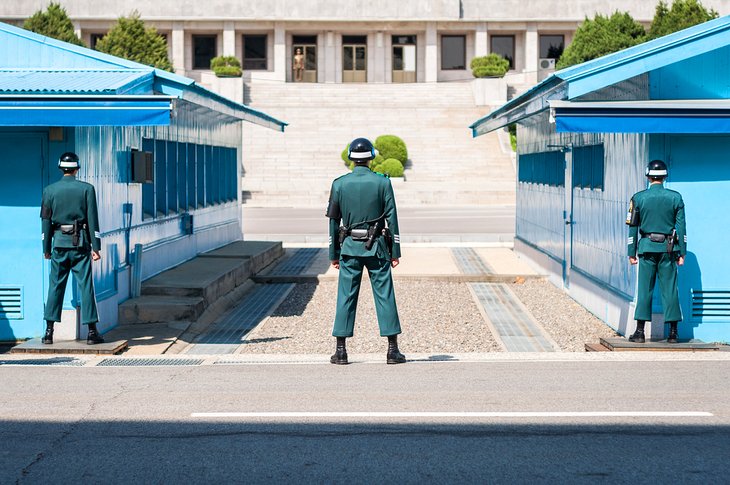
A remnant of the Korean War, the DMZ (Demilitarized Zone) is the area located along the border between North and South Korea. This highly sensitive and highly fortified area can only be visited during an official tour. Aside from the visit to the DMZ, a tour gives you a chance to get out of urban Seoul and see a bit of the Korean countryside.
The Half-Day Korean DMZ Tour, which includes pickup and drop-off in central Seoul, takes you to the important sites in the DMZ area and gets you back to Seoul right after lunch (if you take the early morning tour). The guided tour includes visits to landmarks like the 3rd Tunnel, dug by the North in anticipation of an invasion, and the Dora Observatory, where you can look over into North Korea.
6. Gyeongbokgung Palace
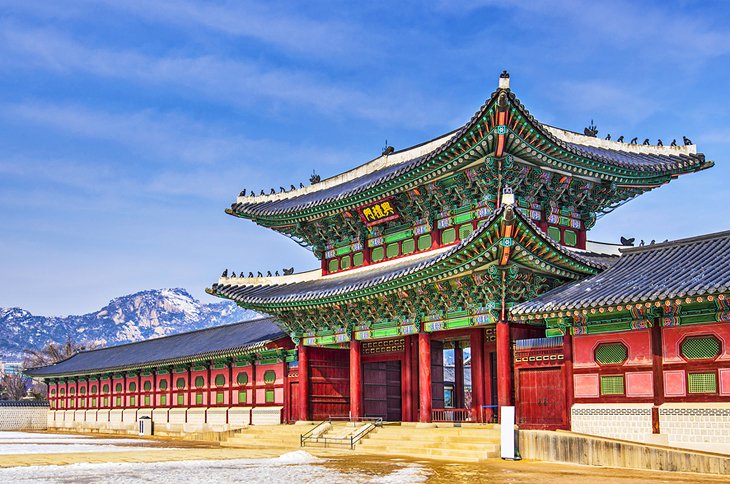
First built in 1395, Gyeongbokgung Palace is the largest of Seoul's five grand palaces built during the powerful Joseon dynasty. Destroyed and rebuilt several times over the centuries, it was restored to its original glory after the Second World War and totally restored in the 1990s.
A visit to the Gyeongbokgung Palace is one of the best things to do in Seoul because within the palace grounds, you can also find the National Palace Museum of Korea and the National Folk Museum of Korea, and both are worth a visit. The palace museum is especially fascinating as it presents items from the palaces of the Joseon Dynasty.
This includes priceless antiques and artwork, as well as everyday items for cooking, cleaning, and daily life. The National Folk Museum focuses on items from daily life, as well as clothing and dioramas, to tell the story of the Korean people since prehistoric times.
Address: 161 Sajik-ro, Sejongno, Jongno-gu, Seoul
7. Seoul Museum of Art
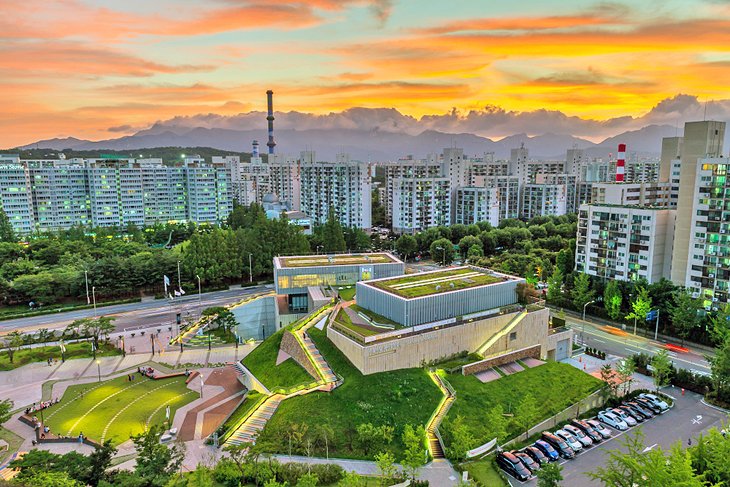
Located behind the Deoksugung Palace, the Seoul Museum of Art, or SeMa as it's known to locals, has a large collection of artwork, mainly from the modern era. The art museum focuses on Korean art and Korean artists but has a decent selection of international works and creators. Changing temporary and visiting exhibitions also showcase unique collections and artwork.
The collection is displayed over three floors in a large building that was formerly the home of the Korean Supreme Court. The museum has six additional satellite locations in other parts of Seoul, and these feature rotating exhibits from the museum's main collection, as well as special exhibitions.
Don't miss the museum's Nam June Paik Memorial House, an exhibition and workshop space inside the house of legendary Korean contemporary artist Nam June Paik. The house is located in Seoul's Changsin-Dong neighborhood.
Address: 61, Deoksugung-gil, Jung-gu, Seoul
8. Blue House
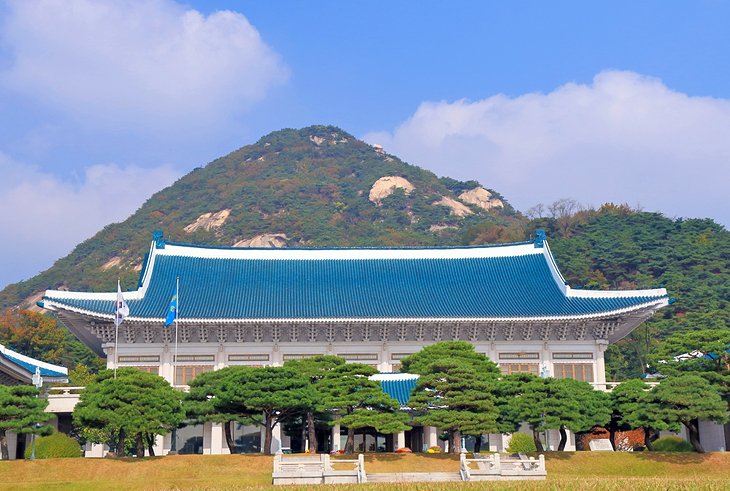
The Blue House is Korea's version of the White House. It's the official residence of the Korean president, as well as the location of his and related executive offices of state. The Blue House isn't really a single building, it's an entire campus of buildings, all built in the traditional Korean style and all featuring the distinctive blue tile roofs where it gets its name.
One of the coolest things to do in Seoul is to take a tour of the Blue House. Hour-long tours are given, but participants must apply and schedule their tour in advance, online. The tour takes you to many parts of the palace complex including meeting rooms, reception rooms, and the Korean version of the Rose Garden, where the Korean president holds press conferences.
Ask your hotel concierge to help with reservations.
Address: 1 Sejongno, Jongno-gu, Seoul
9. Bongeunsa Temple
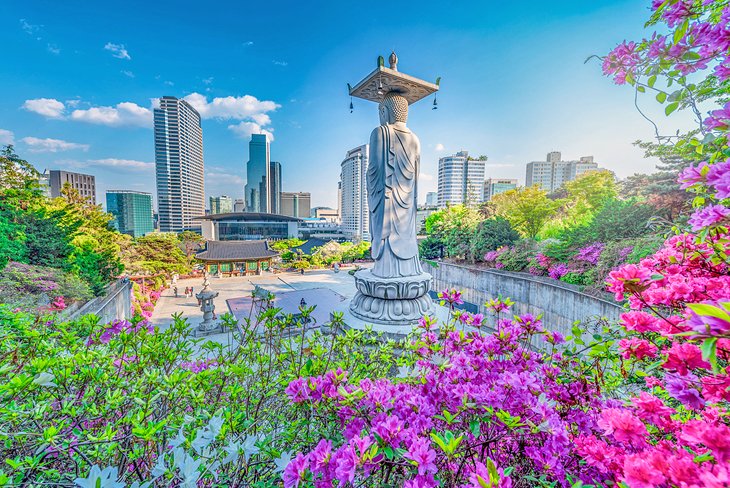
Bongeunsa is one of many Buddhist temples in and around Seoul. It first opened in the year 794 and is a complex of multiple buildings and shrines. It's easy to visit, as it's centrally located in the exciting Gangnam area. If you're spending the day sightseeing and exploring the city, this is a wonderful place to take a break.
The temple is on the side of a low mountain, directly across the street from the massive COEX convention center and mall. It's a popular spot for convention-goers to take a break and enjoy the peaceful atmosphere. Visitors are welcome, and the temple even has a program that allows guests to experience the daily life of a monk for a few hours.
Address: 531 Bongeunsa-ro, Samseong 1(il)-dong, Gangnam-gu, Seoul
10. Gwanghwamun Gate
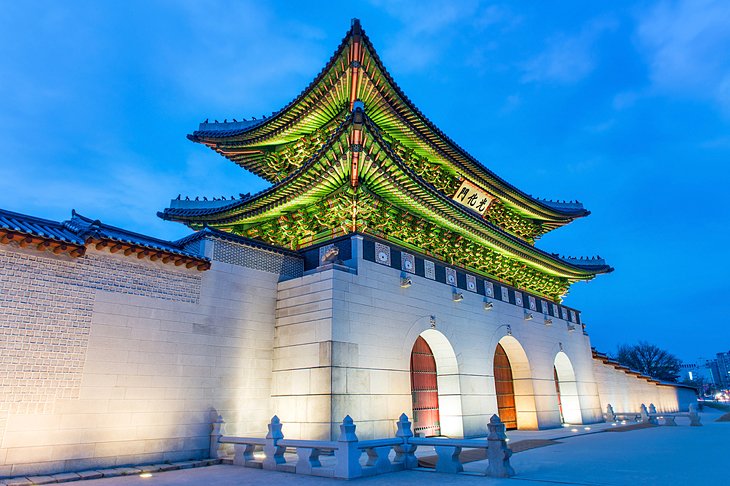
The largest and main gate to Seoul's Gyeongbokgung Palace, Gwanghwamun Gate is home to the changing of the guards ceremony (performed since 1469), which happens daily (except Tuesdays) at 10am and 2pm.
The gate has undergone many renovations and rebuilding, most recently in 2010, when it was restored to its original location and reconstructed with native materials using traditional tools and building techniques.
There's a large plaza in front, and the gate sits in front of the vast Gwanghwamun Square, home to frequent political demonstrations, a large subway station, a giant fountain, and some huge statues of Joseon-era leaders.
Address: 161 Sajik-ro, Sejongno, Jongno-gu, Seoul
11. Take a Walk along Cheonggyecheon, Seoul's Urban Stream
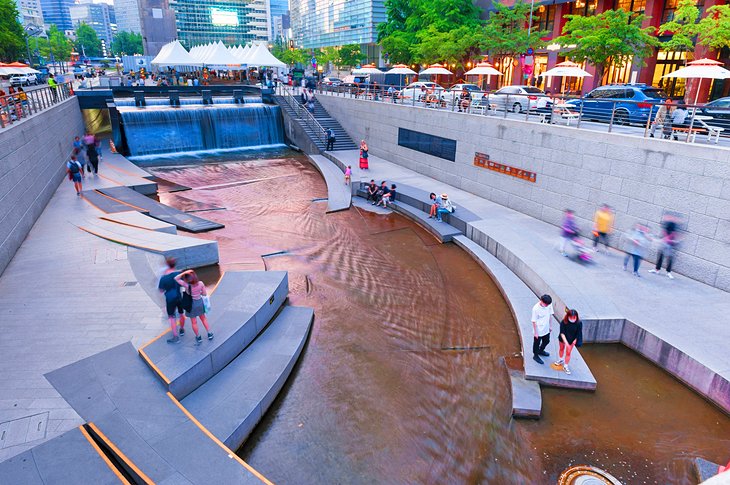
This natural creek that flows through central Seoul was covered over by highways in the post-Korean War economic boom. Seven miles of the creek were uncovered as part of an urban revitalization project and turned into an outdoor recreation area, opening in 2005.
There are now seven miles of creek-side hiking, walking and biking trails. It really has changed the CBD of Seoul by bringing an artery of water and green into what was a very urbanized, crowded area.
The creek is also home to the spectacular Seoul Lantern Festival, held each November. Ornate, lighted paper lanterns are displayed in and along the creek, and each night, thousands of people line the creek to view and enjoy the floating artwork. It's a fun, nighttime activity for families, as a lot of the art installations are geared toward children.
12. Jingwansa Temple, Bukhansan National Park
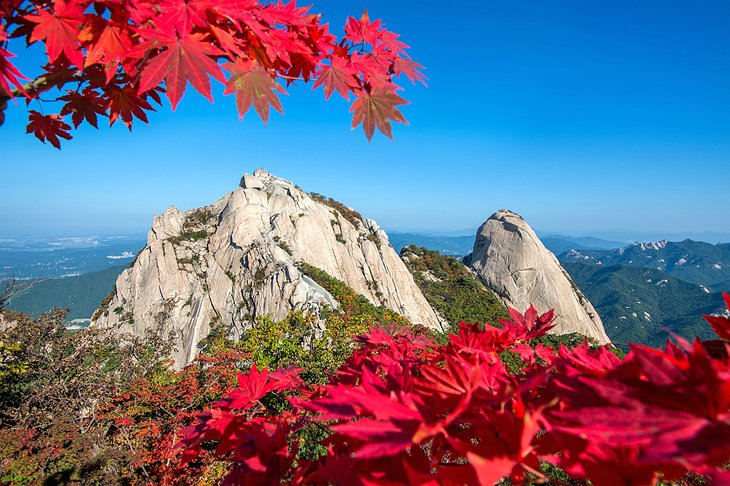
Set within the strikingly beautiful landscape of the Bukhansan National Park, Jingwansa is an ancient temple complex offering many ways to experience and learn about Buddhism and temple life. The traditional buildings are surrounded by miles of hiking trails (you can come here just to hike) snaking through the mountains.
The temple, which grows most of its own food (and even ferments its own kimchee), has a range of public programs. There's a temple stay program, which includes an overnight visit, plus there are cultural and learning programs. They also offer foodie experiences like a traditional vegetarian temple meal, as eaten by the monks.
Jingwansa is on the far west side of the city, it's one of the four major temples of Seoul first built around 1,000 BC.
Address: 73 Jingwan-gil, Jingwan-dong, Eunpyeong-gu, Seoul
13. People Watch in Itaewon
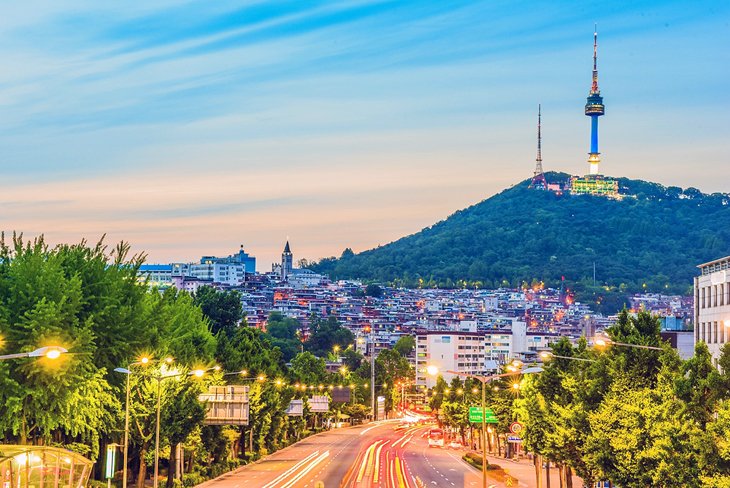
Itaewon is a bustling neighborhood of Seoul focused on a few pedestrian streets filled with shops, cafés, and other consumer businesses. If you have limited time in the city, it's one of those places that can give you a real feel for Korean retail culture in a short time period. There are food carts and street performers, and some of the side streets are filled with restaurants. It's a great place for people-watching.
This is an excellent place to wander around and just lose yourself in the energy of the city. Be sure to wander down pedestrian-only Gyeongnidan Street, as it's lined with all kinds of restaurants and is a place to buy many international foods not easily available in Korea (like pizza and American-style barbecue). It's a fun thing to do in Seoul for families, and you'll see many parents and children here.
Another street, literally called Itaewon Antique Furniture Street, is filled with antique shops, and this is always an excellent place to buy unique gifts.
14. Dongdaemun Design Plaza
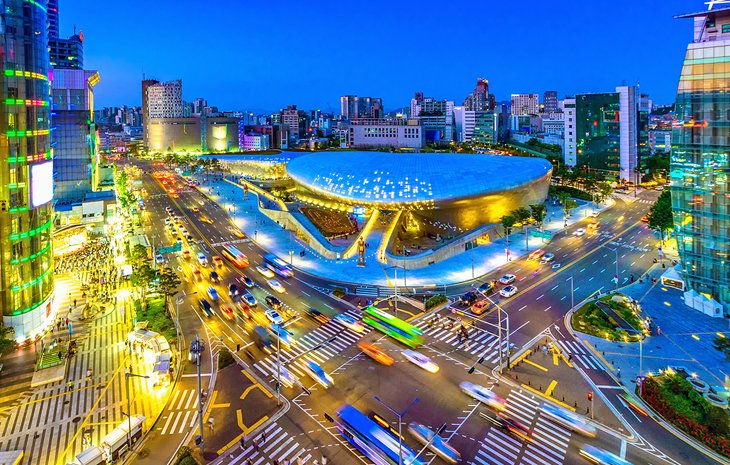
Known by its initials, the DDP is a very cool design center in Seoul's Dongdaemun area. Dongdaemun, Seoul's fashion district, is also known for its shopping; there are a lot of department stores and discount clothing and houseware stores in the area. The DDP has changing art and creative exhibitions open to the public, as well as a very cool store inside.
The silver, orb-like flowing Dongdaemun Design Plaza building looks like something from outer space. It was designed by the late Iraqi-British architect Zaha Hadid, considered one of the great female architects of the modern era. In perhaps Seoul's ultimate contrast, there are ruins of the ancient city fortress preserved just outside the front entrance of the design center.
The complex is filled with showrooms, workspaces, offices, and design studios. There is also what has to be Seoul's coolest shop, with small craft vendors selling all kinds of interesting items showcasing contemporary design and locally made, handcrafted items. It's an excellent place to buy unique gifts.
A visit to the DDP is one of the best things to do in Seoul at night — the design center comes alive when the sun goes down, the highlight being 25,550 white LED roses that light up. The silver-colored, modern, curving building and the rows of artificial flowers make the DDP one of Seoul's best Instagram spots.
After your visit, head across the street for a burger and crinkle-cut fries at one of Seoul's most popular new dining spots, Shake Shack. It's right across from the DDP in the Doota shopping mall.
Address: 281 Eulji-ro, Euljiro 7(chil)-ga, Jung-gu, Seoul
15. Gwangjang Market
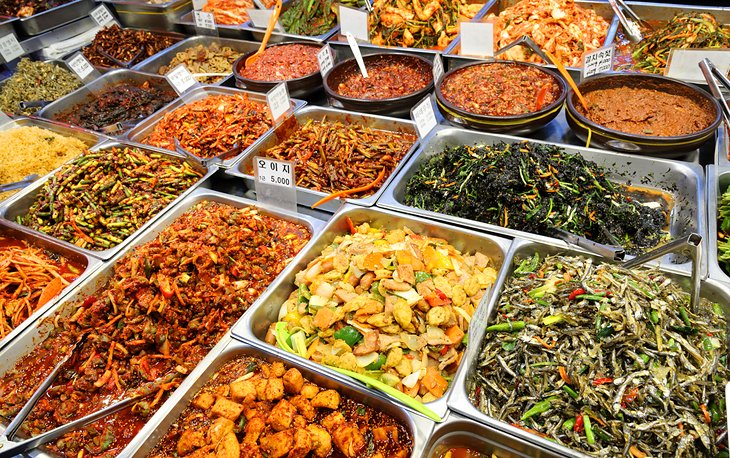
Seoul's best street food market combines a taste-bud tempting array of street food vendors under one large roof. The market features rows of food stalls, offering every kind of Korean food you can imagine.
Most stalls have small chairs or stools in front of them, creating tiny restaurants, where you can sit and have a meal. It's all about tasting things here, and a smile and request will usually get you a sample of most of the things on offer.
The market is in central Seoul, and it's open from 9am to 10pm. The most popular things sold here are bindaetteok (mung bean pancakes), bibimbap (rice mixed with sauteed beef, vegetables, and gochujang red chili paste), gimbap (Korean sushi), sundae (blood sausage), tteokbokki (stir-fried spicy rice cakes), and various types of noodles.
Other parts of the market have vendors selling meat and seafood, and other sections have clothes and household items.
Address: 88 Changgyeonggung-ro, Jongno 4(sa)-ga, Jongno-gu, Seoul
16. Spend a Sunday in Insadong
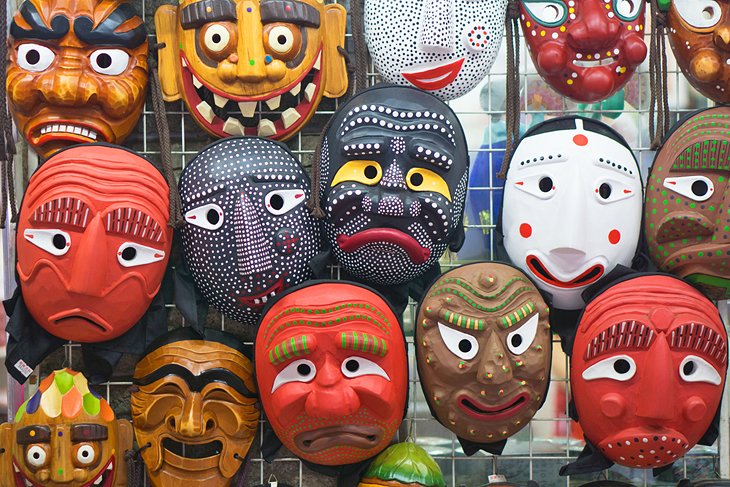
This unique neighborhood in central Seoul is filled with small stores that sell Korean traditional folk and handicrafts, along with art galleries. Stores sell things like hanji (traditional, hand-made paper), hanbok (traditional clothing), teas, pottery, and unique artwork.
The galleries in Insadong feature Korean fine art of all types. There are also a lot of tea houses and small cafes, perfect for a break during your shopping adventures.
The Insadong area really comes alive on Saturday afternoons and all day Sunday, when streets are closed to traffic and it becomes a giant craft and culture fair. Aside from food stalls and vendors, there are traditional music and dance performances and other cultural exhibits.
Where to Stay in Seoul for Sightseeing
Luxury Hotels:
- Grand Mercure Ambassador Hotel and Residences Seoul Yongsan is one of Seoul's top 5-star resorts. Located in the heart of downtown, it offers a range of poshly decorated rooms and suites, all with stunning city views, especially after dark. Amenities include multiple restaurants, an indoor golf room, a fitness center, and spa. There is also a swimming pool, hot tub, and sauna. If you're traveling with the family, there is a kids' club, and if that family includes a dog, the hotel is pet friendly.
- Designed with relaxation in mind, SIGNIEL SEOUL has luxurious and comfortable rooms with beautiful decor. It's located high up in Seoul's Lotte World Tower, so the rooms and suites have some spectacular views. There are several restaurants in the hotel and a wide variety close by in the tower and mall complex below. Other on-site amenities include an indoor swimming pool and a hot tub and a spa with a full range of treatments. There is also a fitness center on-site.
- Four Seasons Hotel Seoul is the largest hotel in the South Korean capital city and the first in South Korea. The 5-star property has 317 rooms, including 43 suites, and all feature elegant luxe decor. Expect customizable beds with high-quality linens, spa-style bathrooms, and floor-to-ceiling windows with great city views. The hotel is family-friendly and has a kids' pool and a children's menu at its restaurants. Other amenities include a posh spa, a heated indoor swimming pool, an indoor golf driving range, and a fitness center.
Mid-Range Hotels:
- May Place Seoul Dongdaemun is a top mid-range choice. It offers a mix of rooms and suites that are spartan but comfortable, with wood floors and white linen-draped beds. They also come with air purifiers and blackout curtains. Amenities include a restaurant, a hot tub, and a rooftop terrace where you can check out the panoramic city and mountain views.
- In the middle of Seoul's cultural district, Hotel28 Myeongdong is another excellent good-value choice, especially if you like sleek and modern décor. The hotel has glass walls of windows and well-appointed rooms and suites. Amenities include a restaurant and workout room.
- GLAD Gangnam COEX Center Hotel has a convenient locale just outside Exit 1 of the Samseong Subway Station. Rooms feature contemporary décor, floor-to-ceiling windows, and giant wall-mounted flat-screen TVs. Amenities include a restaurant with a breakfast buffet, a workout room, and a 24-hour front desk.
Budget Hotels:
- Delight Hotel is a clean and comfortable budget choice with contemporary rooms featuring luxury linens, marble bathrooms with rain showers, and large windows. Amenities include a restaurant serving complimentary breakfast, 24-hour room service, a hot tub, and even rental bikes to explore the area.
- Also, try the Grid Inn Hotel for budget-friendly lodging. Centrally located in the Gwanak-Gu district, it offers tidy rooms with refrigerators, blackout curtains, and safes. There is a restaurant and coffee shop on-site. The front desk is open 24 hours, and there is self-service laundry for guests.
Map of Attractions & Things to Do in Seoul
Seoul, South Korea - Climate Chart
| Average minimum and maximum temperatures for Seoul, South Korea in °C | |||||||||||
| J | F | M | A | M | J | J | A | S | O | N | D |
| 1 -6 | 3 -4 | 9 2 | 17 8 | 22 13 | 26 18 | 28 22 | 29 22 | 25 17 | 19 11 | 11 3 | 3 -3 |
| PlanetWare.com | |||||||||||
| Average minimum and maximum temperatures for Seoul, South Korea in °F | |||||||||||
| J | F | M | A | M | J | J | A | S | O | N | D |
| 33 21 | 38 25 | 49 35 | 62 46 | 72 55 | 79 64 | 82 71 | 84 72 | 77 63 | 66 51 | 51 38 | 38 27 |
| PlanetWare.com | |||||||||||
More Related Articles on PlanetWare.com
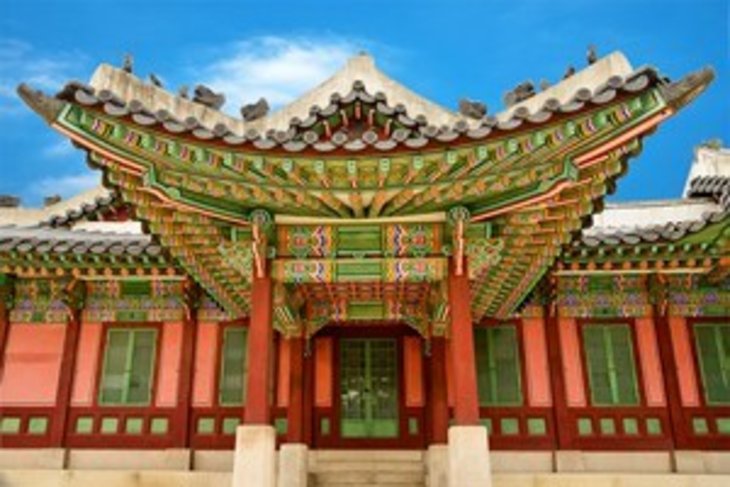
Beyond Seoul: While many of the country's highlights are in Seoul, have a look at our article on the top attractions in South Korea for ideas on places to visit throughout the country.



